IV
To say “this is good Noise” or “that is bad Noise” is to miss the point.
V
Noise without meaning nor finality is revolutionary as long as it does not support anything or anybody.
"Theses on Noise"
by
Mattin
*

Pet Sounds: In the Key of Dee
Beach Boys vs. J Dilla Mixtape
Presented by Bullion
(2007)
*
Brandon Jordan
AKA Grizz
AKA Grizzly Adams




*
Art uses things to make its presence felt. But art is not itself a thing.
If art is, in truth, art, it feels as if it is too concrete to be mere appearance, but not concrete enough to exist as mere reality. In other words, art is more and less than a thing. And it is this simultaneous expression of more-ness and less-ness that makes what is made art.
"What Art Is and Where it Belongs"
by
Paul Chan
*
Karl Hurst




*
I liked it better
when my fingers
were people.
I should drive away from my life.
If a man comes through town on his way to California, I will go with him. I don’t care who
he is:
if his wife is pretty, fine;
if he is returning to her, fine.
A man should be going there today,
at least one man; this city
is so big.
"California"
by
Jen Denrow
*
Hella - "Headless"
*
Ben Giles




*
Mark Oliver Adams
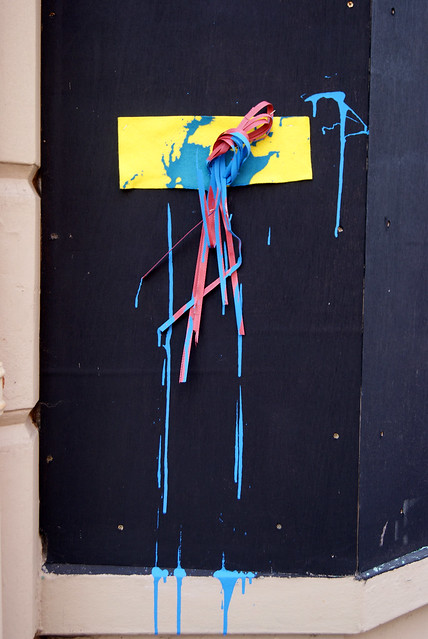

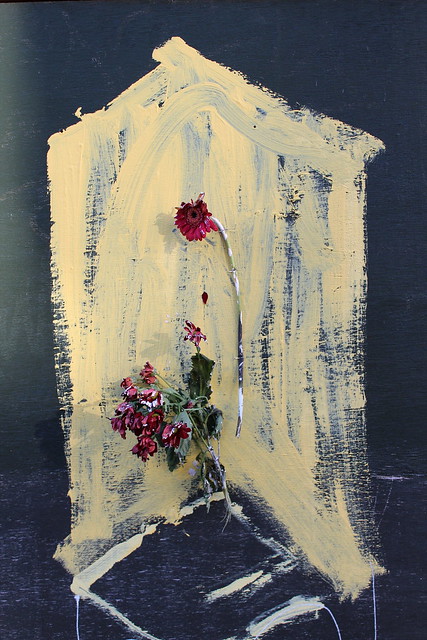
*
of the holy blood's
Book of Invasions



*
The Weird, then, is starkly opposed to the hauntological. Hauntology, a category positing, presuming, implying a ‘time out of joint’,(21) a present stained with traces of the ghostly, the dead-but-unquiet, estranges reality in an almost precisely opposite fashion to the Weird: with a radicalised uncanny – ‘something which is secretly familiar, which has undergone repression and then returned from it’(22) – rather than a hallucinatory/nihilist novum.
"M.R. James and the Quantum Vampire Weird;
Hauntological: Versus and/or and and/or or?"
by
China Miéville
*
An Artist's Statement from Charlotte Young (2011)
*
Kohei Akiba
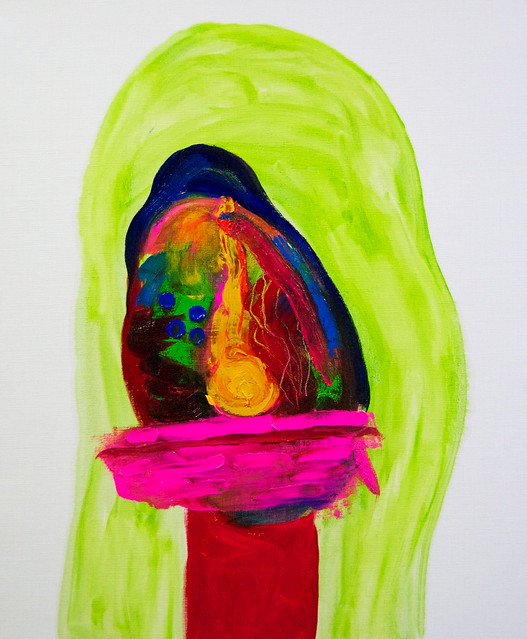


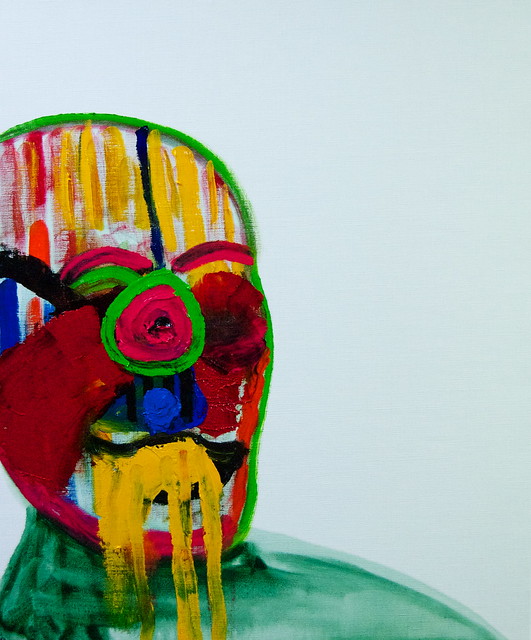

*
Rasha Kahil



*
An artist should have more and more of less and less.
An artist should have more and more of less and less.
An artist should have more and more of less and less.
Marina Abramović
at
the Smithsonian's Hirshhorn Museum and Sculpture Garden
(2011)
*
Romolo Giulio Milito



*
Richard Serra "Boomerang"(1974)
*
There is a pre-history to Rimbaud's,
"I is another." (Letter to the Seer),
Which renders it elusive in its authorship,
And therefore still more authoritative.
In 1854, Nerval inscribes a photo of himself,
"I am the other." In 1870, six months
Before Rimbaud's world-reversing letter,
The Comte de Lautreamont writes,
"If I exist, I am not another . . ."
(He then starved to death
At the age of 24,
Shifting our emphasis to "If.")
"Close To The Art Of Those Fearless At Sea"
by
Geoffrey Cruickshank-Hagenbuckle
*
Milan Nenezic



*
Michelle Karpman



*
Smash the mirror, let it present itself as all sorts of opportunity, varied shards, the clean tool, the letter. He felt right. He grew. Top of the mirror and pulled. It boomed, face down, containing most of the break. The cardboard brown back. Bits were smaller than he’d guess. Largest piece of glass in the room, other than the southern, knife as the letter fluttered off the table behind him.
"Cease"
by
Ken Baumann
*
Holger Biermann



*
5.0 The idea of “art” has a basic and general human sense, on which no specific profession or class has a monopoly
5.1 “Art,” conceived of as creative expression in general, can be seen as representing a function as basic as exercise or dialogue, and a need only slightly less fundamental than eating or sex (“slightly less fundamental” because the question of creative expression comes after simple survival—you must first secure food before you can think of cuisine)
5.2 Conceived of in this way, every human activity has an artistic component, an aspect under which it can be viewed as “creative”
“9.5 Theses on Art and Class”
by
Ben Davis
*
Philipp Igumnov a.k.a woodcum




*
Amy Shackleton - Painting Timelapse
Amy works entirely without a paintbrush. Watch the artist work at 800x speed, creating a new urban landscape painting, "Terraced City."
*
Kiyomitsu Saito


*
Esmé Valk
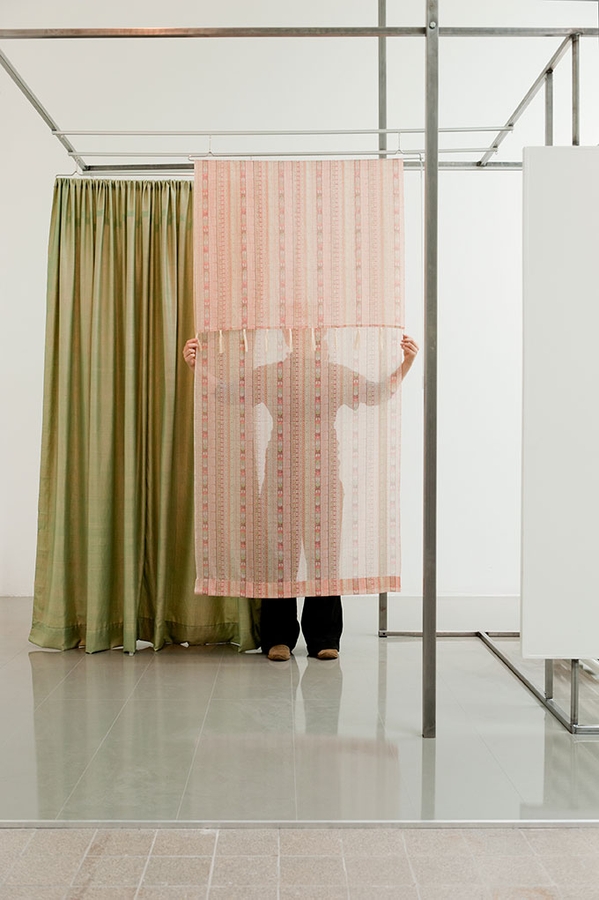
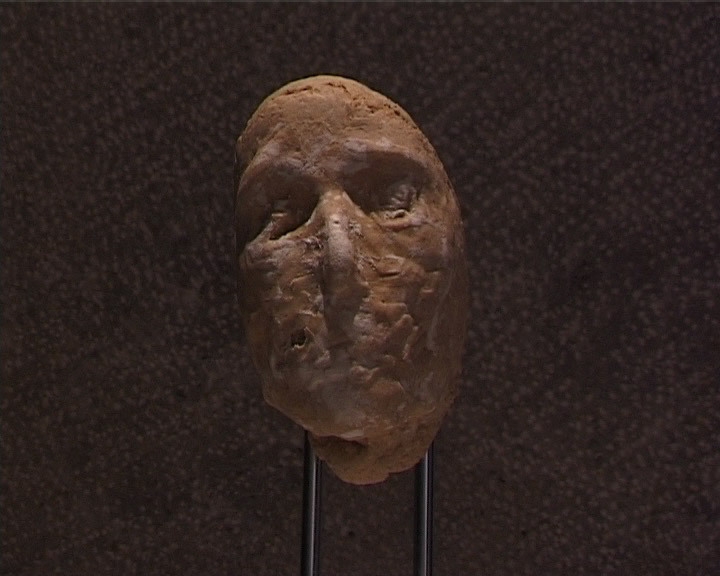
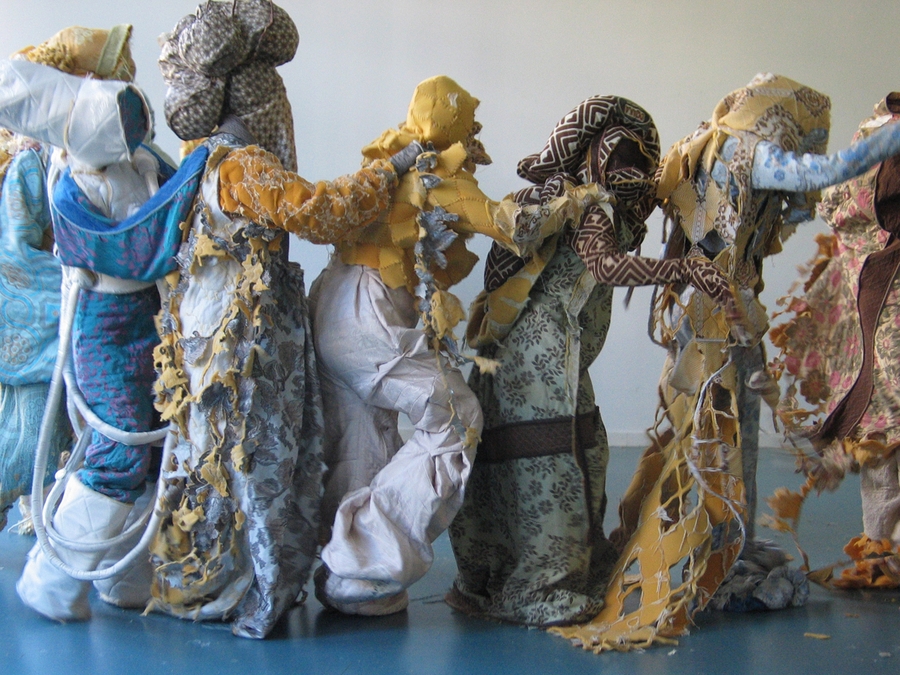
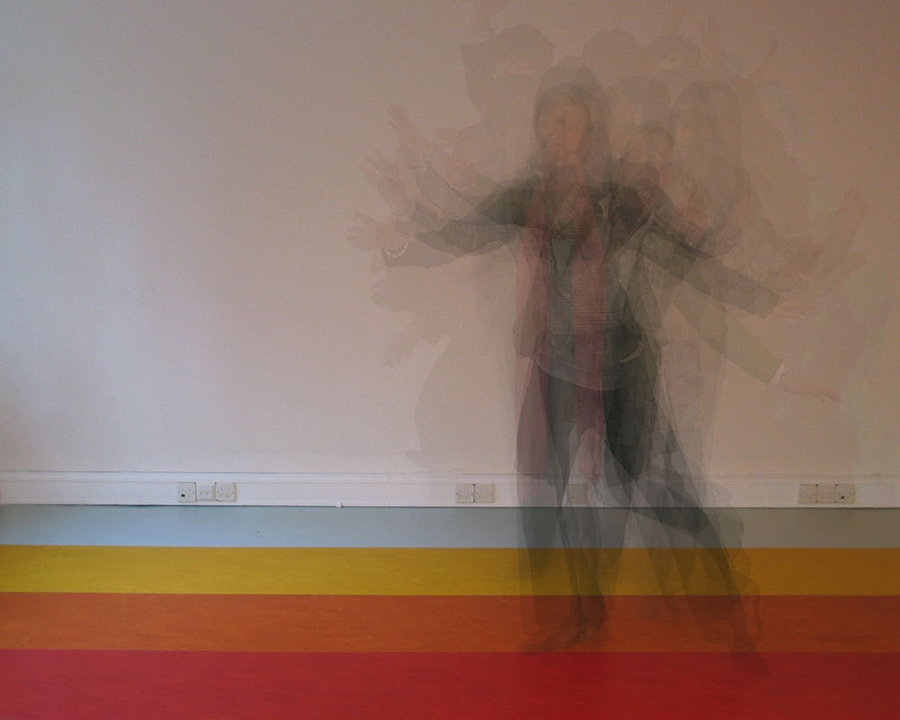
*
Dara Scully

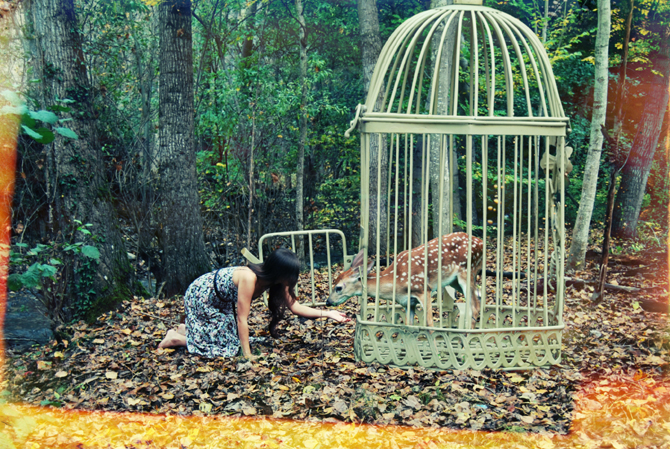

*
Christy Lee Rogers





*
the quilt of you cut up and sold to geese who’d consumed themselves for pleasure in the gold eye, in the money of him woke again in thrush and smeared against a white wall in summertime for your benefit and my private instance of mirage, the cream that came out of the pill hole beyond resizing, in the photographs of light destroyed
"Cake"
by
Blake Butler
*
Letha Wilson






*
When the time comes I will be able to tell you about the time I was told I suffered from a condition uncommon in an intensity that afflicts only a very few individual sufferers so severely each generation at a time. I can tell you about this time but it takes some time for that time, like missiles into silos, to slip into place with the sustained swish of car tires revolving fast over a wet Monday morning road, or the sound of a chain being let from a spool, my nine year-old deaf and bawling dyslexic self an anchor falling, falling unsure of how to remain plumb or hit bottom.
ACCESSIBLE
by
Joe Milazzo
*
Julianne Swartz



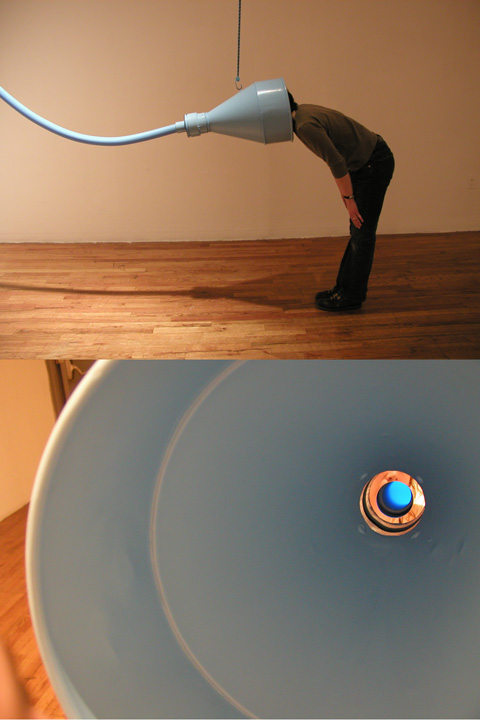
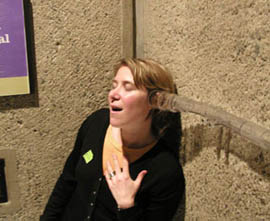
*
Today, we do not identify an artwork primarily as an object produced by the manual work of an individual artist in such a way that the traces of this work remain visible or, at least, identifiable in the body of the artwork itself. During the nineteenth century, painting and sculpture were seen as extensions of the artist’s body, as evoking the presence of this body even following the artist’s death. In this sense, artist’s work was not regarded as “alienated” work—in contrast to the alienated, industrial labor that does not presuppose any traceable connection between the producer’s body and the industrial product. Since at least Duchamp and his use of the readymade, this situation has changed drastically. And the main change lies not so much in the presentation of industrially produced objects as artworks, as in a new possibility that opened for the artist, to not only produce artworks in an alienated, quasi-industrial manner, but also to allow these artworks to maintain an appearance of being industrially produced.
"Marx After Duchamp, or The Artist’s Two Bodies"
by
Boris Groys
*
Sun Araw - "Horse Steppin"
Video: Travelogue #1: Space Coast
by Craig Hand
*
Herman Van Ingelgem
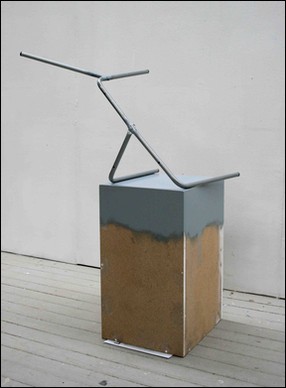
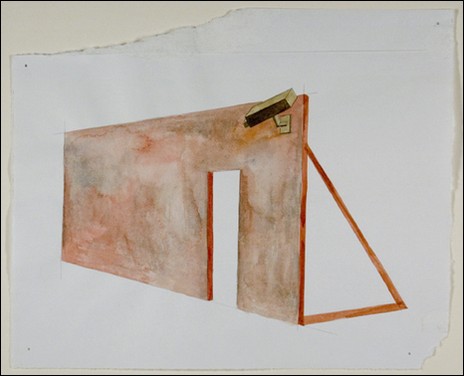
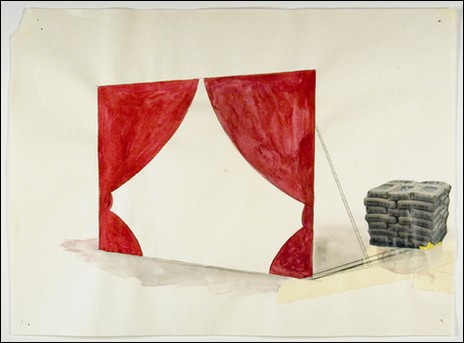
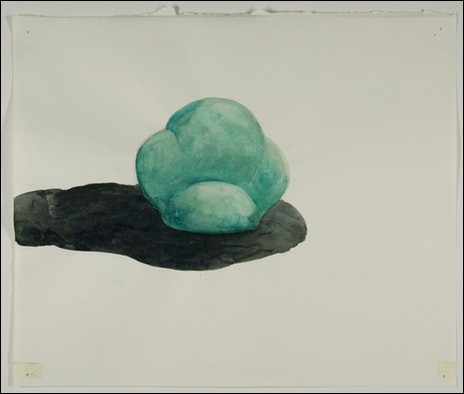
*
hard is the only way
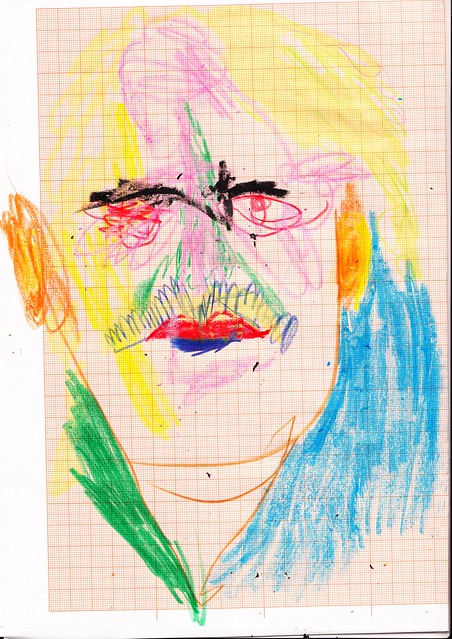
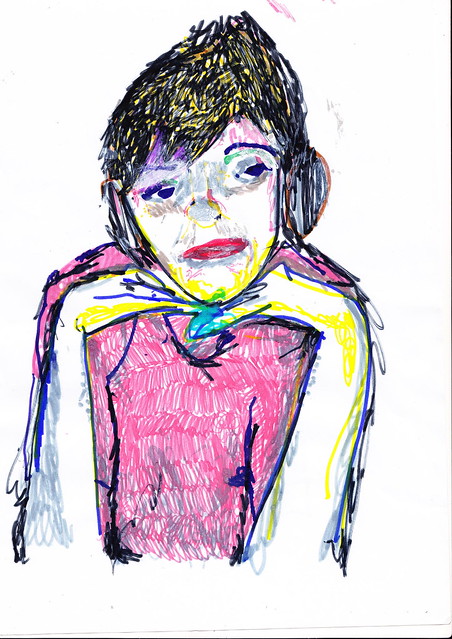
*
I write down words because I am a speaking animal who will die, who is descended from dead animals who were made the same way.
Words are little holes you can poke your eyes through to touch the dead (if you are reading).
If you are writing they are the little holes you poke your hand through to touch people when they’re walking over your grave. (See Keats.)
WORDS ARE HOLES & A POET’S A DEAD ANIMAL THAT SPEAKS
by
Heather Christle
*
Esther Solondz
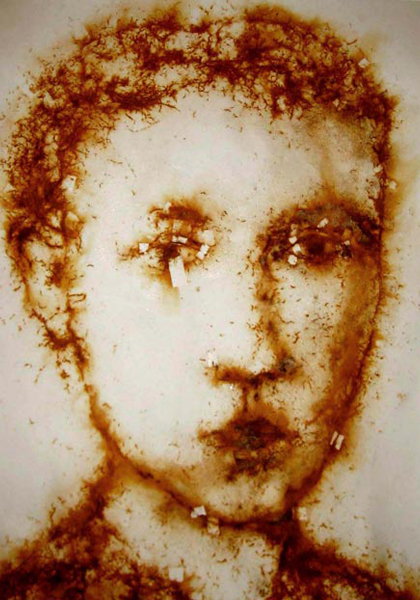
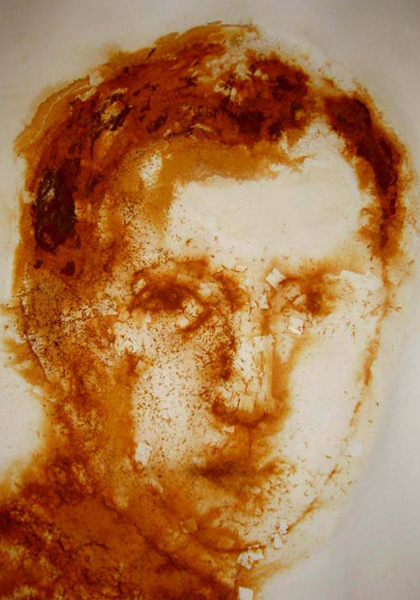
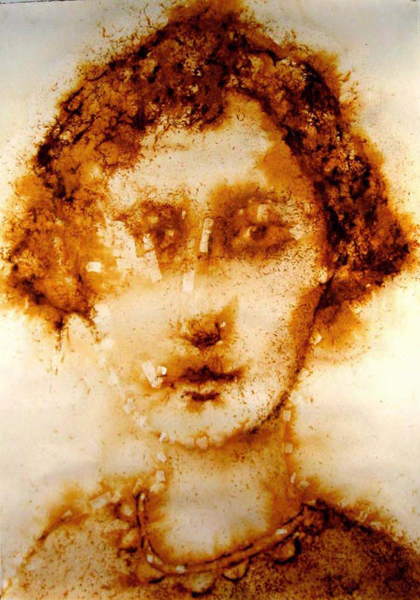
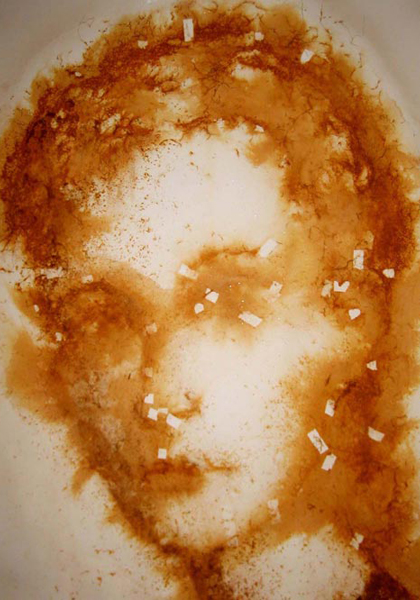
*
I was sangfroid and so I sang Freud and dragged out joints of cliché—say we, may we accept sherry? Manegg was born innately. Let me put an end to son envy and colonialism with natalism—that was my intention, ambition. Nevertheless, I stand up to urinate and wave hello in my halo of amniotic trance.
"Petite Manifesto 2"
by
Don Mee Choi
*
Marco Mazzoni
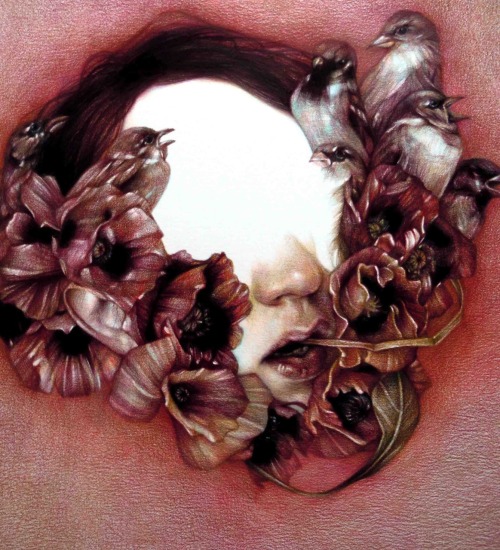
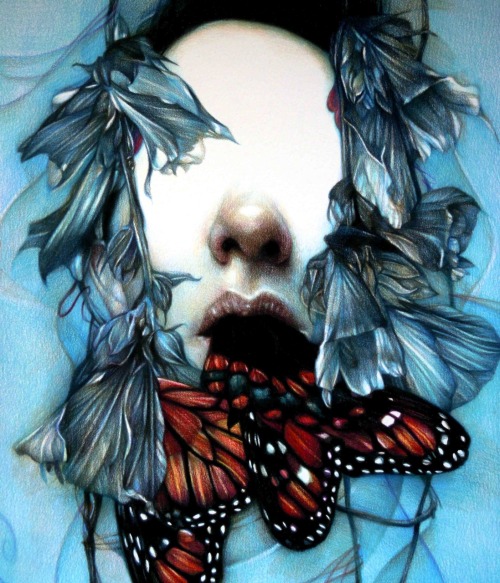

*
Gabriel Lester




*
Video: The New Wave | Part 1 & 2 of 6
1973 WGBH Boston Public Television program exploring the relatively new area of video art. The program highlights several video artists exploring the video medium and pushing its boundries, with a focus on artists working with video synthesizers.
Part 3-6
*
Cezary Bodzianowski
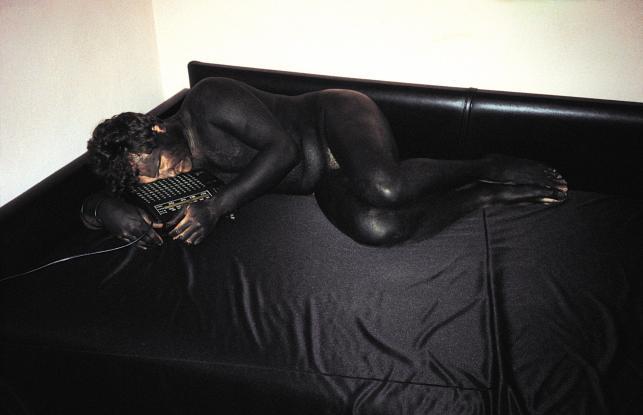

*
The unicorns danced with the unicorns. The umbrellas danced with the unicorns. The man danced over pigs. The umbrellas pigged over pigs. The children slept on tables. The umbrellas fell in bed. The woman pigged over pigs. The woman pigged with the unicorns. The woman fell in bed. The man laughed in bed. The unicorns danced on tables. The umbrellas laughed over pigs. The children laughed with the unicorns. The pigs danced with the unicorns. The woman pigged on tables. The umbrellas pigged on tables. The pigs slept with the unicorns. The pigs laughed over pigs. The children pigged over pigs. The unicorns slept in bed. The man danced in bed. The pigs pigged over pigs.
"Pigs"
by
Darby Larson
*
James Jean




*
SBTRKT -- "Wildfire" (Feat. Little Dragon)
*
Your life is a painting in a dark museum
And sometimes you examine it closely
"Zone"
by
Guillaume Apollinaire
*
Philipp Banken


*
Gavin Worth

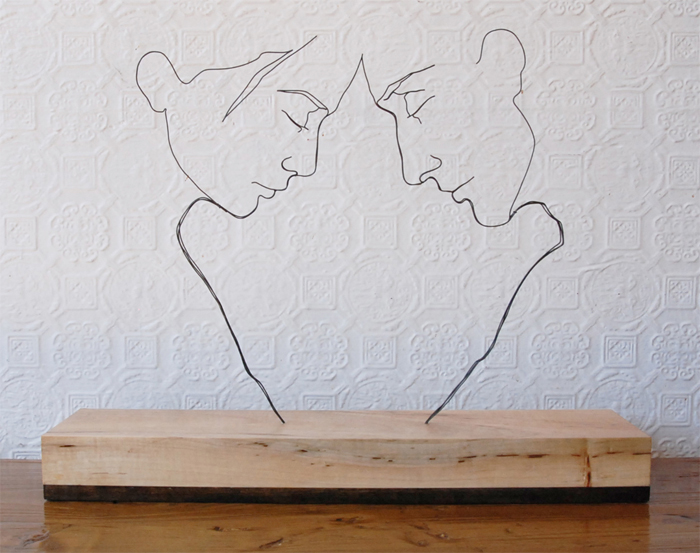
*
Catherine Sullivan



*
If a poem could start breathing new paths with its own arrangement, grow eyes from multi-fractured narrators in the same take, a suction of stationary vowel made component within.
What semiotics lifts the creature angry from its bleating, changes our instincts?
"Shucks About Everything"
by
Sean Kilpatrick
*
Jean-Pascal Flavien



*
Ruth Swanson




*
Jonas Reinhardt - "Only Pharoah"
directed by Isabel Salvado
*
Jonathan Mayhew





*
Robin Waart
"Thinking in Pictures"
An ongoing project begun in 2007, a growing collection of film moments from 1930 onwards when someone says “What do you think?” or “What are you thinking?”







To say “this is good Noise” or “that is bad Noise” is to miss the point.
V
Noise without meaning nor finality is revolutionary as long as it does not support anything or anybody.
"Theses on Noise"
by
Mattin
*

Pet Sounds: In the Key of Dee
Beach Boys vs. J Dilla Mixtape
Presented by Bullion
(2007)
*
Brandon Jordan
AKA Grizz
AKA Grizzly Adams




*
Art uses things to make its presence felt. But art is not itself a thing.
If art is, in truth, art, it feels as if it is too concrete to be mere appearance, but not concrete enough to exist as mere reality. In other words, art is more and less than a thing. And it is this simultaneous expression of more-ness and less-ness that makes what is made art.
"What Art Is and Where it Belongs"
by
Paul Chan
*
Karl Hurst




*
I liked it better
when my fingers
were people.
I should drive away from my life.
If a man comes through town on his way to California, I will go with him. I don’t care who
he is:
if his wife is pretty, fine;
if he is returning to her, fine.
A man should be going there today,
at least one man; this city
is so big.
"California"
by
Jen Denrow
*
Hella - "Headless"
*
Ben Giles




*
Mark Oliver Adams



*
of the holy blood's
Book of Invasions



*
The Weird, then, is starkly opposed to the hauntological. Hauntology, a category positing, presuming, implying a ‘time out of joint’,(21) a present stained with traces of the ghostly, the dead-but-unquiet, estranges reality in an almost precisely opposite fashion to the Weird: with a radicalised uncanny – ‘something which is secretly familiar, which has undergone repression and then returned from it’(22) – rather than a hallucinatory/nihilist novum.
"M.R. James and the Quantum Vampire Weird;
Hauntological: Versus and/or and and/or or?"
by
China Miéville
*
An Artist's Statement from Charlotte Young (2011)
*
Kohei Akiba





*
Rasha Kahil



*
An artist should have more and more of less and less.
An artist should have more and more of less and less.
An artist should have more and more of less and less.
Marina Abramović
at
the Smithsonian's Hirshhorn Museum and Sculpture Garden
(2011)
*
Romolo Giulio Milito



*
Richard Serra "Boomerang"(1974)
*
There is a pre-history to Rimbaud's,
"I is another." (Letter to the Seer),
Which renders it elusive in its authorship,
And therefore still more authoritative.
In 1854, Nerval inscribes a photo of himself,
"I am the other." In 1870, six months
Before Rimbaud's world-reversing letter,
The Comte de Lautreamont writes,
"If I exist, I am not another . . ."
(He then starved to death
At the age of 24,
Shifting our emphasis to "If.")
"Close To The Art Of Those Fearless At Sea"
by
Geoffrey Cruickshank-Hagenbuckle
*
Milan Nenezic



*
Michelle Karpman



*
Smash the mirror, let it present itself as all sorts of opportunity, varied shards, the clean tool, the letter. He felt right. He grew. Top of the mirror and pulled. It boomed, face down, containing most of the break. The cardboard brown back. Bits were smaller than he’d guess. Largest piece of glass in the room, other than the southern, knife as the letter fluttered off the table behind him.
"Cease"
by
Ken Baumann
*
Holger Biermann



*
5.0 The idea of “art” has a basic and general human sense, on which no specific profession or class has a monopoly
5.1 “Art,” conceived of as creative expression in general, can be seen as representing a function as basic as exercise or dialogue, and a need only slightly less fundamental than eating or sex (“slightly less fundamental” because the question of creative expression comes after simple survival—you must first secure food before you can think of cuisine)
5.2 Conceived of in this way, every human activity has an artistic component, an aspect under which it can be viewed as “creative”
“9.5 Theses on Art and Class”
by
Ben Davis
*
Philipp Igumnov a.k.a woodcum




*
Amy Shackleton - Painting Timelapse
Amy works entirely without a paintbrush. Watch the artist work at 800x speed, creating a new urban landscape painting, "Terraced City."
*
Kiyomitsu Saito


*
Esmé Valk




*
Dara Scully



*
Christy Lee Rogers





*
the quilt of you cut up and sold to geese who’d consumed themselves for pleasure in the gold eye, in the money of him woke again in thrush and smeared against a white wall in summertime for your benefit and my private instance of mirage, the cream that came out of the pill hole beyond resizing, in the photographs of light destroyed
"Cake"
by
Blake Butler
*
Letha Wilson






*
When the time comes I will be able to tell you about the time I was told I suffered from a condition uncommon in an intensity that afflicts only a very few individual sufferers so severely each generation at a time. I can tell you about this time but it takes some time for that time, like missiles into silos, to slip into place with the sustained swish of car tires revolving fast over a wet Monday morning road, or the sound of a chain being let from a spool, my nine year-old deaf and bawling dyslexic self an anchor falling, falling unsure of how to remain plumb or hit bottom.
ACCESSIBLE
by
Joe Milazzo
*
Julianne Swartz





*
Today, we do not identify an artwork primarily as an object produced by the manual work of an individual artist in such a way that the traces of this work remain visible or, at least, identifiable in the body of the artwork itself. During the nineteenth century, painting and sculpture were seen as extensions of the artist’s body, as evoking the presence of this body even following the artist’s death. In this sense, artist’s work was not regarded as “alienated” work—in contrast to the alienated, industrial labor that does not presuppose any traceable connection between the producer’s body and the industrial product. Since at least Duchamp and his use of the readymade, this situation has changed drastically. And the main change lies not so much in the presentation of industrially produced objects as artworks, as in a new possibility that opened for the artist, to not only produce artworks in an alienated, quasi-industrial manner, but also to allow these artworks to maintain an appearance of being industrially produced.
"Marx After Duchamp, or The Artist’s Two Bodies"
by
Boris Groys
*
Sun Araw - "Horse Steppin"
Video: Travelogue #1: Space Coast
by Craig Hand
*
Herman Van Ingelgem




*
hard is the only way


*
I write down words because I am a speaking animal who will die, who is descended from dead animals who were made the same way.
Words are little holes you can poke your eyes through to touch the dead (if you are reading).
If you are writing they are the little holes you poke your hand through to touch people when they’re walking over your grave. (See Keats.)
WORDS ARE HOLES & A POET’S A DEAD ANIMAL THAT SPEAKS
by
Heather Christle
*
Esther Solondz




*
I was sangfroid and so I sang Freud and dragged out joints of cliché—say we, may we accept sherry? Manegg was born innately. Let me put an end to son envy and colonialism with natalism—that was my intention, ambition. Nevertheless, I stand up to urinate and wave hello in my halo of amniotic trance.
"Petite Manifesto 2"
by
Don Mee Choi
*
Marco Mazzoni



*
Gabriel Lester



*
Video: The New Wave | Part 1 & 2 of 6
1973 WGBH Boston Public Television program exploring the relatively new area of video art. The program highlights several video artists exploring the video medium and pushing its boundries, with a focus on artists working with video synthesizers.
Part 3-6
*
Cezary Bodzianowski


*
The unicorns danced with the unicorns. The umbrellas danced with the unicorns. The man danced over pigs. The umbrellas pigged over pigs. The children slept on tables. The umbrellas fell in bed. The woman pigged over pigs. The woman pigged with the unicorns. The woman fell in bed. The man laughed in bed. The unicorns danced on tables. The umbrellas laughed over pigs. The children laughed with the unicorns. The pigs danced with the unicorns. The woman pigged on tables. The umbrellas pigged on tables. The pigs slept with the unicorns. The pigs laughed over pigs. The children pigged over pigs. The unicorns slept in bed. The man danced in bed. The pigs pigged over pigs.
"Pigs"
by
Darby Larson
*
James Jean
*
SBTRKT -- "Wildfire" (Feat. Little Dragon)
*
Your life is a painting in a dark museum
And sometimes you examine it closely
"Zone"
by
Guillaume Apollinaire
*
Philipp Banken


*
Gavin Worth


*
Catherine Sullivan



*
If a poem could start breathing new paths with its own arrangement, grow eyes from multi-fractured narrators in the same take, a suction of stationary vowel made component within.
What semiotics lifts the creature angry from its bleating, changes our instincts?
"Shucks About Everything"
by
Sean Kilpatrick
*
Jean-Pascal Flavien



*
Ruth Swanson




*
Jonas Reinhardt - "Only Pharoah"
directed by Isabel Salvado
*
Jonathan Mayhew





*
Robin Waart
"Thinking in Pictures"
An ongoing project begun in 2007, a growing collection of film moments from 1930 onwards when someone says “What do you think?” or “What are you thinking?”






